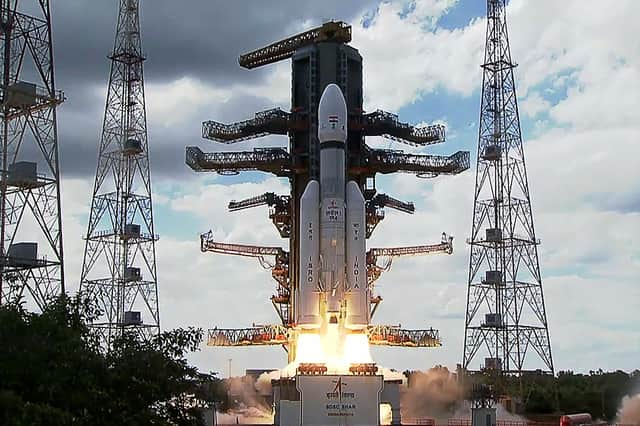Chandrayaan-3: India’s spacecraft now circles the Earth after historic lunar mission


The Chandrayaan-3 Moon mission spacecraft has returned to Earth’s orbit after a historic mission which saw India become the first nation to land on the south pole of the moon. As such it has demonstrated technologies that may help the country return samples from the lunar surface.
The Indian Space Research Organisation (Isro) said the propulsion module of the mission, was moved from orbit around the Moon to one around the Earth and will orbit for around two weeks in a high orbit where there are “no threats of close approach with any operational Earth-orbiting satellites”, the Indian space agency noted.
Advertisement
Hide AdAdvertisement
Hide AdThe module reached its closest point to Earth on 22 November, coming within 154,000km (95,000 miles) of the planet’s surface, after it was launched on 14 July and put the Chandrayaan-3 lander and rover in an orbit around the moon.
It then studied the Earth by taking a slightly higher orbit around the moon as it helped search for planets like the blue marble.
The Space Agency initially planned to study the Earth using the module’s “Shape” payload for about three months with the fuel it had in stock as it had around 100 kg of fuel left after over a month of operations in lunar orbit, and the available fuel in the propulsion module was used to demonstrate strategies for a sample return mission. The module was then re-orbited as it continued to observe the planet with its scientific instruments.
“As per plan, SHAPE payload is being operated whenever Earth is in its field of view,” the space agency said.
Advertisement
Hide AdAdvertisement
Hide AdIsro accomplished its primary objectives for the Chandrayaan-3 mission, including the breakthrough demonstration of a soft landing near the lunar south pole on 23 August.
But they managed to accomplish another milestone once Isro’s Pragyaan rover exited the Vikram lander module to explore the lunar surface and detected the “unambiguous” presence of sulphur and other elements near the south pole. It also made the first-ever measurements of the fourth state of matter, plasma, over the south pole surface, which Isro said could lead to “enhanced” communication system designs for “upcoming lunar visitors.”
Isro could plan and execute manoeuvres to return a probe from the Moon to Earth. The space agency hoped to wake the rover up again after it fell asleep during the ‘lunar night’ which lasts around two weeks. However, Vikram would not awake.
Comment Guidelines
National World encourages reader discussion on our stories. User feedback, insights and back-and-forth exchanges add a rich layer of context to reporting. Please review our Community Guidelines before commenting.
